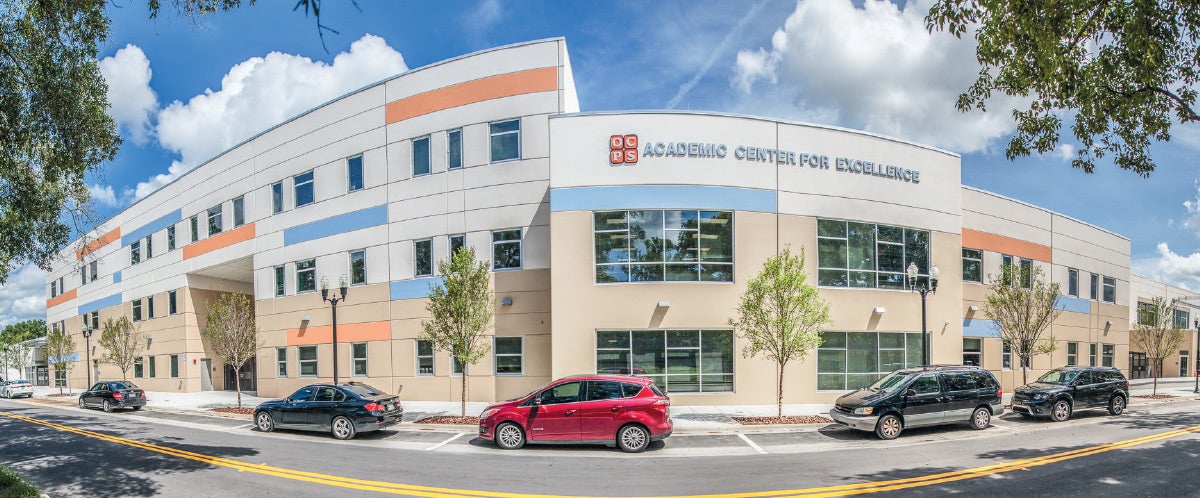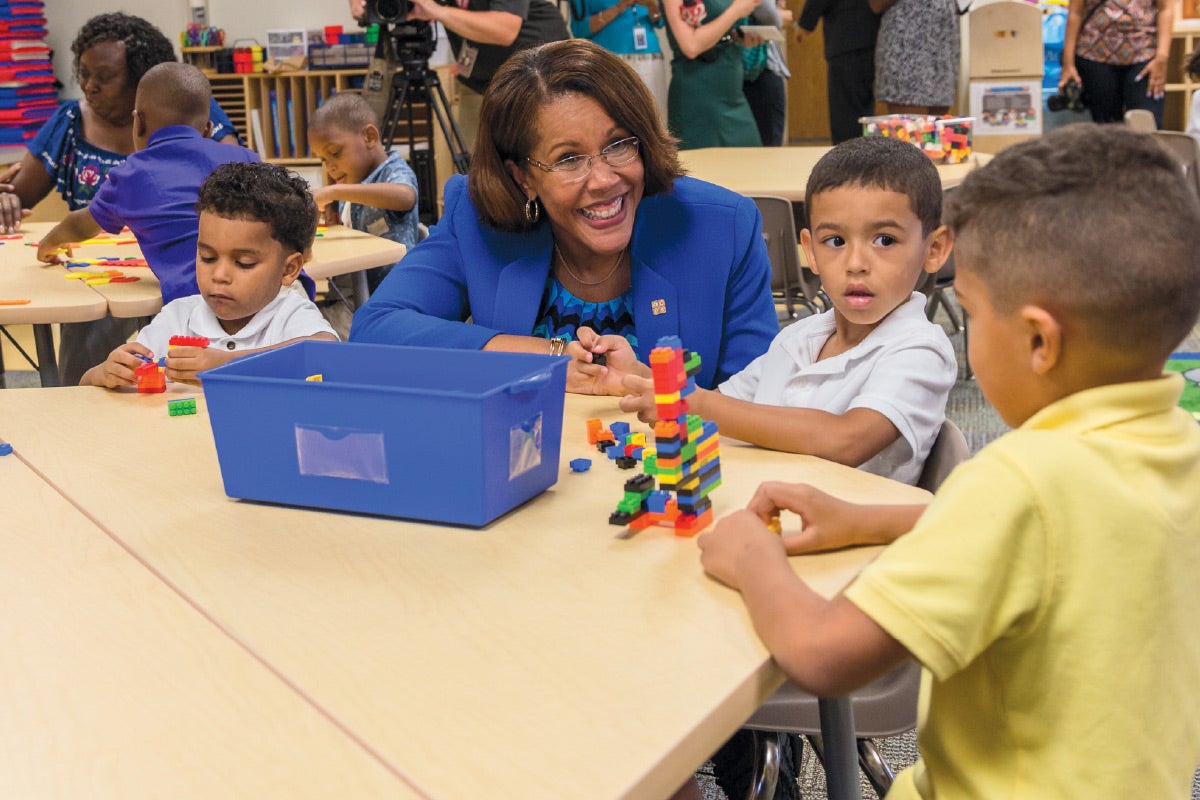
Revitalizing a Downtown Neighborhood
Fall 2017 | By Nicole Dudenhoefer
For the first time in 46 years, Orlando’s Parramore neighborhood has its own school for children in preschool through eighth grade.
Since the early 1970s, when court-ordered integration efforts closed the two all-black schools in the area, children in the Parramore neighborhood have been split up and bused to eight different school.
That all changed on August 14, when the new Orange County Public Schools Academic Center for Excellence (OCPS ACE) opened its doors to nearly 1,000 students. Located across from the UCF Downtown campus, the school is based on an innovative model created by UCF and other partners that envisions the 251,812-square-foot campus as a place to both educate children and improve the community.

The Parramore school is the 13th school in Florida to be built on a successful design — the Community Partnership Schools (CPS) model — developed by UCF and the Children’s Home Society of Florida (CHSFL).
“The opportunities here [at OCPS ACE] are just phenomenal because we have services for parents and families,” says Superintendent Barbara Jenkins ’83 ’86MEd ’96EdD. “There will be activities to draw in these families who have had to go out to other schools previously. Now they have their own community.”
Community schools aim to remove social, economic and health barriers that prevent children in underserved communities from gaining access to the best education possible. There are currently more than 5,000 community schools across the nation.
“The CPS model is unique among community schools because it embeds directors into the school who bring in community resources that benefit the students, parents and community,” says Amy Ellis, director for UCF’s Center for Community Schools. “In some parts of the country, only a nonprofit and a school district partner come together to develop their community schools. In the Community Partnership School model, four partners commit to the development and long-term sustainability of the community school, making it one of the most comprehensive models I’ve seen.”
Those four partners are the school district, a health care provider, a nonprofit organization and a college or university — all of which must commit their services to a school for at least 25 years. The aid given by these partners is not just for the students. Parents, other family members and residents in the community are encouraged to use the resources offered at their CPS.
Azsile Harrison, who lives on the same block as OCPS ACE, says she looks forward to using the school’s health services center because of its convenient location. Harrison, a mother of five, has lived in Parramore for 43 years. While her adult children all live in the Pine Hills neighborhood, she insisted her seven grandchildren, from preschoolers to first-graders, attend OCPS ACE. She wants them to use the newest technology the school provides and also have access to the adjoining Boys & Girls Club, which provides a safe space for students to play and receive assistance with their homework.
UCF and CHSFL began testing the CPS model in 2010 at Evans High School in Orange County’s Pine Hills neighborhood. It was renamed the Evans Community School two years later. The additions of a food pantry, on-site counseling services, a health center and after-school programs have proven successful. In the past six years, graduation rates at Evans have increased from 64 percent in 2011 to 88 percent in 2017. Overall crime rates in the neighboring area decreased 17 percent in the first six months of this year.
The people working with OCPS ACE are borrowing ideas from Evans’ successes and hope to replicate the improvements made in Pine Hills. For both Evans and OCPS ACE, the common partners are OCPS, Orange Blossom Family Health, CHSFL and UCF. The Harris Rosen Foundation is providing more than $1 million dollars in funding and services for the preschool located on the campus.
“The children growing up in the community surrounding OCPS ACE have tremendous potential — and so do their families,” says Shannon Currie, CPS director for CHSFL. “We’re excited to provide a strong, solid foundation for children and their families involved with OCPS ACE, and we know the education, services and programs they receive at the Community Partnership School will lay the groundwork for a strong future.”
Just as no two neighborhoods are alike, no two Community Partnership Schools are the same. Ellis says the services and assistance offered a each school are developed based on the needs of the community. And while the partners, staff an teachers at OCPS ACE work to find their footing in Parramore, the school has already made an impact on the community.
“The school has certainly beautified the area and caused a lot of cleanup to make it even better than it was looking before,” says Nancy Lightner, who lives across the street from the school and is a minister at the nearby Livingston Street Church of God. “It’s also added more security with the police being here, and the lighting too. It just seems like everybody has a better attitude [since the school was built]; they’re more friendly. I think it’s made people feel a little bit better about the area that they are living in.”

Superintendent Barbara Jenkins ’83 ’86MEd ’96EdD stopped by OCPS ACE on the first day of classes to interact with students.